 September 10, 2020 John E. Ross, KD8IDJ, Editor
| ||||||
Preparations Continue for World Radiocommunication Conference 2023 As preparations for World Radiocommunication Conference 2023 (WRC-23) go forward, the International Amateur Radio Union (IARU) continues its efforts to protect amateur and amateur-satellite allocations. The international conferences, sponsored by the International Telecommunication Union (ITU), typically take place every 4 years. IARU participated in the first online meeting of Project Team A (PTA) of the WRC-23 CEPT Conference Preparatory Group (CPG), reporting Agenda Item 1.12 addresses studies stemming from WRC-19 that are now under way to consider a new secondary allocation to the Earth Exploration-Satellite (active) Service (EESS active) for spaceborne radar sounders in the 40 - 50 MHz range, taking into account the protection of incumbent services (including in adjacent bands), which would include 6 meters. A handful of countries have also allocated secondary amateur bands in the vicinity of 40 MHz. The WRC-19 Resolution (Res. 656), which ordered the studies, noted that spaceborne-active RF sensors can provide unique information on physical properties of the Earth, and that spaceborne-active remote sensing requires specific frequency ranges depending on the physical phenomena to be observed. Spaceborne radars are intended to operate only in uninhabited or sparsely populated areas with particular focus on deserts and polar ice fields, between the hours of 3 AM and 6 AM local time. Agenda Item 1.14 addresses the Earth Exploration-Satellite (passive) Service (EESS passive) in the range 231.5 â 250 GHz. The amateur and amateur-satellite services have a primary allocation at 248â-â250 GHz, and a secondary allocation at 241â-â248 GHz. Agenda Item 9.1 will consider and approve the Report of the Director of the ITU Radiocommunication Bureau on its activities since WRC-19. This includes a review of the Amateur Service and the Amateur Satellite Service allocations in the frequency band 1.240 - 1.300 GHz to determine if additional measures are required to ensure protection of the radionavigation-satellite (space-to-Earth) service (RNSS) operating in the same band. The 1.240 - 1.300 GHz band is allocated worldwide to the Amateur Service on a secondary basis, and the Amateur Satellite Service (Earth-to-space) may operate in the band 1.260 - 1.270 GHz. The primary concern is the potential for interference to the Galileo Global Navigation Satellite System (GPS) in ITU Region 1 (Europe, the Middle East, and Africa). Read more. Ham Radio Wireless Network Camera Detects Washington Wildfire Nigel Vander Houwen, K7NVH, reported on September 8 that some HamWAN users in the Puget Sound region of Washington, who were viewing the network's camera feeds, spotted a large brush fire.
"They reported it to the DNR [Department of Natural Resources], which thanked them for the first report they'd gotten on the fire, and they've sent a team to try and keep it small and under control," Vander Houwen said. "It's estimated currently at around 50 acres, southeast of Enumclaw, along Highway 410." The fire was not said to be threatening any homes. State Route 410 was reported closed between Enumclaw and Greenwater, and drivers heading to Mount Rainier National Park were advised to take another route.
HamWAN is a nonprofit organization developing best practices for high-speed amateur radio data networks. It runs the Puget Sound Data Ring. So far, HamWAN networks have been used for such applications as low-latency repeater linking (including DMR), real-time video feeds, APRS internet gateways (I-gates), providing redundant internet access to emergency operations centers, and more. Amateur radio licensees in the HamWAN service area can connect directly to the network with a modest investment in equipment and no recurring costs. The HamWAN Puget Sound Data Ring has cells deployed at numerous wide-coverage sites, interconnected with 5 GHz radios. The HamWAN technical team has been installing remotely controllable cameras at HamWAN link sites, and one of these was used for the wildfire report. Hams Provide Situational Awareness as Severe Weather Hits Maryland-DC Section Amateur radio volunteers provided the ARRL Maryland-DC Section with situational awareness and breaking information on September 3, as severe weather, including at least one tornado, hit the region around the nation's capital. ARRL Maryland-DC Section Manager Marty Pittinger, KB3MXM, said Section staff and hams across Maryland joined a Section-wide EchoLink *WASH_DC* node and "Hams began reporting severe weather, sharing local situations across several 2-meter SKYWARN® nets -- including W3ICF/R near Frederick, Maryland, and KA2JAI/R in Anne Arundel County," Pittinger said. "These repeaters were also linked through *WASH_DC* to extend reach of critical information." For more than 3 hours, nets reported on wind damage, power outages, flooding, and the impact to traffic across six Maryland counties. Several Maryland county emergency management agencies were at heightened activation levels; Section-wide ARES® was in monitoring-mode, and no ARES activations were requested by served agencies. Bill Feidt, NG3K, in Kensington, said his town was under a tornado watch for several hours. "At one point, it went to a warning -- 'a tornado is headed your way,'" said Feidt. "I suspect the cell that we were warned about was a rotating wall cloud and a funnel never
reached the ground, since there was little appreciable damage in our immediate area. But that system was definitely a nail-biter." The storms traveled more than 80 miles across Maryland with one passing north of DC, spawning a brief tornado in Edgemere, not far from the US Naval Academy. Another storm crossed over Baltimore. Earlier that day, the Maryland-DC Section and ARES leadership collaborated to plan a course of action. Section Emergency Coordinator Jim Montgomery, WB3KAS, notified ARES teams of approaching storms. Section leadership released information via social media and email. "The timeliness, wide-area coverage, interoperability with selected VHF and UHF repeaters, coupled with numerous hams in affected areas, provided the best ground-truth," Pittinger said. Air Force Research Laboratory Tracks Sporadic E Researchers at the Air Force Research Laboratory (AFRL) in New Mexico have discovered a new way to track and characterize sporadic E, which occurs when large structures of dense plasma form naturally in the upper atmosphere. These plasma structures, which occur at mid-latitude locations around the world, can affect radio wave propagation in both positive and negative ways. VHF enthusiasts frequently take advantage of sporadic-E propagation (or E-skip) to work stations outside of their local area.
"Previous methods to observe these structures were insufficient for identifying and tracking these structures over large regions," said Ken Obenberger, a research physicist at AFRL. "It would be advantageous to actively identify where these structures are, where they are going, and how dense they are. And we thought we could find a better way." The new method, developed by Obenberger and collaborators at AFRL and the University of New Mexico, leverages unintentional RF emissions from power lines. Using the broadband radio noise, they can map and track dense sporadic-E structures. "Since power lines are widespread, we can observe sporadic E over a very large region surrounding our observatory, the Long Wavelength Array (LWA), an asset of our collaborators at the University of New Mexico," Obenberger said. "This technique could be used anywhere in the world where there is an electrical grid and an instrument similar to the LWA, and we are lucky because there are not many." Climatology of sporadic E can provide a probability that it will occur, but the actual presence of sporadic E can only be determined through trial-and-error observations. Chris Fallen, KL3WX, one of Obenberger's collaborators at AFRL, said, "Ken's technique basically provides weather radar for sporadic E, only using radio noise from power lines as the radar transmitter." Having accurate "now-casting" of sporadic E could prove critical during disaster situations, where hams may play a key role in supporting communication of vital information. Read more. -- Thanks to Joanne Perkins, Air Force Research Laboratory ARRL Podcasts Schedule
The On the Air and Eclectic Tech podcasts are sponsored by Icom. Both podcasts are available on iTunes (iOS) and Stitcher (Android), as well as on Blubrry -- On the Air | Eclectic Tech. NCVEC Holds Its Annual Meeting via Teleconference ARRL Volunteer Examiner Coordinator (VEC) Manager Maria Somma, AB1FM, reports that the National Conference of Volunteer Examiner Coordinators (NCVEC) held its annual meeting via teleconference on August 21. Somma is the NCVEC Vice Chair. NCVEC Chair Larry Pollock, NB5X, presided at the 35th annual meeting. The NCVEC functions to facilitate communication between the FCC and VECs. Representatives of all 14 FCC-certified VECs took part in the conference, while nine FCC staff members were on hand.
FCC Enforcement Bureau (EB) Special Counsel Laura Smith advised VEC delegates that the FCC has been on lockdown since March and that staff members will be teleworking indefinitely. This includes staff at FCC Headquarters in Washington, DC; the Gettysburg, Pennsylvania location, and the other field offices. Smith said field engineers aren't going out unless the issue involves safety or if lives are in danger. FCC Mobility Division (MD) Deputy Chief Tom Derenge explained that one of his areas of responsibility is processing paperwork for applicants answering "yes" to the basic qualification question (BQQ) that asks if they've ever been convicted of a felony. Derenge said that paperwork from his office goes to the FCC General Counsel and the Investigations and Hearings Division (IHD). Those divisions are responsible for resolution in non-compliant conduct. Paperwork in these instances may take a while to be processed, Derenge said. Derenge recommended that VECs make it clear to applicants that their address will be public information when the new license is issued. He pointed out that once an address is in the FCC database, it's nearly impossible to be permanently removed. Dorothy Stifflemire, the Associate Division Chief of the WTB Technologies Systems and Innovation Division, told VECs that new license applicants should create an FCC user account and register She explained that auto-registration in CORES at exam sessions using a Social Security number will be going away. In addition, because no mail is being sent due to the COVID-19 pandemic, applicants will not receive their auto-created password and FRN and will not be able to access the Universal Licensing System (ULS), the FCC license records database. Going forward, she said, VECs should make sure all applicants have an FRN before exam day. Remote administration of amateur radio exam sessions was the hot topic of discussion, Somma said. Since April 1, ARRL VEC, W5YI-VEC, and the Greater Los Angeles Amateur Radio Group VEC (GLAARG) have remotely tested more than 4,000 applicants using videoconferencing and online examinations. Proof-of-concept and procedural information were discussed for the benefit of other VECs that might be interested in pursuing remote testing. Exam candidates can search for upcoming remote online examination dates on the HamStudy website. Somma and Assistant ARRL VEC Manager Amanda Grimaldi, N1NHL, represented ARRL at the virtual gathering. Read more. The K7RA Solar Update Tad Cook, K7RA, Seattle, reports: An extended lull in solar activity persists. The smoothed sunspot minimum occurred last December, but the flurry of moderate sunspot activity in August has not continued.
Wednesday, September 9, was the 19th consecutive day with no sunspots, but Spaceweather.com reported that a small sunspot with a Solar Cycle 25 magnetic signature may be forming in the sun's southeastern quadrant. Average daily solar flux barely budged, moving from 69.6 to 69.7. Geomagnetic indicators were very quiet, with average daily planetary A index declining from 13.1 to 4.4. As with last week's forecast, predicted solar flux is 70 on every day over the next 45 days, September 10 - October 24. Predicted planetary A index is 5 on September 10 - 17; 8 on September 18 - 19; 5 on September 20 - 22; 8, 10, and 15 on September 23 - 25; 10, 25, 15, and 10 on September 26 - 29; 5 on September 30; 8 on October 1; 5 on October 2 - 14; 8 on October 15 - 16; 5 on October 17 - 19, and 8, 10, 15, 10 and 25 on October 20 - 24. Frank Donovan, W3LPL, forwarded a video about big solar events of 3 years ago. Sunspot numbers for September 3 - 9 were 0, 0, 0, 0, 0, 0, and 0, for a mean of 0. The 10.7-centimeter flux was 70, 69.7, 69.2, 69.5, 70.2, 69.9, and 69.7, with a mean of 69.7. Estimated planetary A indices were 4, 8, 6, 4, 4, 4, and 1, with a mean of 4.4. Middle latitude A index was 3, 9, 7, 5, 5, 4, and 1, with a mean of 4.9. A comprehensive K7RA Solar Update is posted Fridays on the ARRL website. For more information concerning radio propagation, visit the ARRL Technical Information Service, read "What the Numbers Mean...," and check out K9LA's Propagation Page. A propagation bulletin archive is available. For customizable propagation charts, visit the VOACAP Online for Ham Radio website. Share your reports and observations. Just Ahead in Radiosport
See the ARRL Contest Calendar for more information. For in-depth reporting on amateur radio contesting, subscribe to The ARRL Contest Update via your ARRL member profile email preferences. North American CW Sprint is Great Practice for Fall Contesting The September edition of the North American CW Sprint, sponsored by National Contest Journal (NCJ), is this weekend. The often-frantic 4-hour event gets under way on Sunday, September 13, at 0000 UTC (Saturday, September 12 in North American time zones). CW Sprints take place twice a year, in September and February; RTTY Sprints are in March and September. "The CW Sprint can seem intimidating, particularly the first couple of times with its loud signals and high code speed, but there are some secrets to getting the hang of things," said veteran contester and contest manager Ward Silver, N0AX. A unique feature of the CW Silver notes that band conditions during the September Sprint are an incentive for operators to put more emphasis on 20 meters than in the February Sprint, because sunset is much later in September. "We will also be just a week from the equinox, a time when conditions are usually pretty good on 20 and 40 meters," he pointed out. Eighty meters will be less noisy than in mid-summer, and if the thunderstorms take a day off, we can expect coast-to-coast activity." Silver urged Sprint veterans to encourage fellow hams and club members to give it a try. "Teams are fun, too, especially for new contesters and contest club members," he noted. Teams do not have to be associated with formal clubs. The QSY rule can be daunting for newcomers. In short, a station calling CQ on a new, clear frequency may work one responding station on that frequency and then must move at least 5 kHz before calling CQ again, and at least 1 kHz before initiating another contact, either by calling CQ or by responding to another station. The responding station inherits the initial frequency. The exchange is both call signs, a consecutive serial number, name, and state/province/DX. Listening stations can tell which station in a contact to call by listening to call sign placement in the exchange, as Silver describes in "Conversation: Having Fun in the North American CW Sprint," in the September 2 issue of the ARRL Contest Update. Read more. K1USN Radio Club Announces New Weekly Slow-Speed CW Contest The K1USN Radio Club in Massachusetts is launching a new weekly, hour-long, slow-speed contest, the K1USN SST. The inaugural session will be on Monday, September 14, from 0000 - 0100 UTC (Sunday, September 13, in North American time zones). K1USN trustee Pi Pugh, K1RV, said the decision to embark on sponsorship of a new operating event involved surveying some 2,000 radio amateurs to gauge their enthusiasm for such an event. Pugh said the club worked with a group of CWops members within the club, with the blessing of the CWops CW Academy Advisor Group. CWops is not involved in sponsoring the K1USN SST.
Although predicated on the desires of the CW Academy community, Pugh stressed that the weekly activity will be open to all looking to improve their CW skills. It can also provide a more comfortable entry point for those just getting started in CW contesting. "The weekly 20 WPM or slower SSTs can build confidence to find open frequencies and begin calling CQ," Pugh suggested. Participants are advised to be patient, supportive, and willing to slow down as necessary. Suggested frequencies are 3.532 - 3.539 on 80 meters; 7.032 - 7.039 MHz on 40 meters, and 14.032 - 14.039 MHz on 20 meters. Stations exchange name and state/province/country. Read more. Announcements
Maine Radio Amateur Dies after Fall from Tower James Larner, N1ATO, of Bangor, Maine, died on Wednesday, September 2, after apparently falling a reported 80 feet from an amateur radio tower in the rural Knox County town of Union. The incident happened just before 1 PM local time. Said to have been a tower professional who had done a lot of work for many Maine broadcasters, Larner, an ARRL member, was 74.
Larner worked part-time as an engineer at News Center Maine's outlet in Bangor. A News Center Maine article paid tribute to Larner. "Jim was a lot of fun, always happy to talk, share a story. A smart, hard-working, real Maine guy," said News Center reporter Don Carrigan. "One of those people the audience never sees, but whose work was critical to them being able to watch TV for many, many years." The Occupational Safety and Health Administration was contacted and will conduct a follow-up investigation along with the Maine Medical Examiner's office. -- Thanks to the Bangor Daily News, News Center Maine, the Rockland Courier-Gazette, and to Norman Blake, W1ITT Upcoming ARRL Section, State, and Division Conventions Note: Many conventions and hamfests have been canceled or postponed due to the coronavirus pandemic. Check the calendar of canceled events on the ARRL website.
Find conventions and hamfests in your area. ARRL -- Your One-Stop Resource for . .
Subscribe to...
Free of charge to ARRL members...
| ||||||
.JPG) this week that "a good start was made on items of interest to the amateur and amateur-satellite services."
this week that "a good start was made on items of interest to the amateur and amateur-satellite services.".jpg)
.jpg)
.jpg) linked repeaters to report situational awareness as the eastern half of the state and Washington, DC, were hit hard.
linked repeaters to report situational awareness as the eastern half of the state and Washington, DC, were hit hard..jpg)
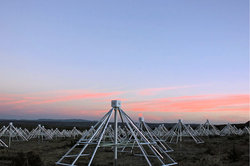
.jpg) The latest episode of the On the Air podcast (Episode 9) features a discussion on how to tune HF signals and use transceiver tools to enhance reception. The On the Air podcast is a monthly companion to On the Air magazine, ARRL's magazine for beginner-to-intermediate ham radio operators.
The latest episode of the On the Air podcast (Episode 9) features a discussion on how to tune HF signals and use transceiver tools to enhance reception. The On the Air podcast is a monthly companion to On the Air magazine, ARRL's magazine for beginner-to-intermediate ham radio operators..jpg) The latest episode of the Eclectic Tech podcast (Episode 16) features a chat about the 222 MHz band, with QST's "The World Above 50 MHz" columnist Jon Jones, N0JK. Also, Steve Ford, WB8IMY, offers some tips on shopping for coaxial cable.
The latest episode of the Eclectic Tech podcast (Episode 16) features a chat about the 222 MHz band, with QST's "The World Above 50 MHz" columnist Jon Jones, N0JK. Also, Steve Ford, WB8IMY, offers some tips on shopping for coaxial cable..jpg)
.jpg) their Social Security number (SSN) in the FCC Commission Registration System (CORES) before attending exam sessions. Registrants will be assigned a Federal Registration Number (FRN), which will be used in all license transactions with the FCC.
their Social Security number (SSN) in the FCC Commission Registration System (CORES) before attending exam sessions. Registrants will be assigned a Federal Registration Number (FRN), which will be used in all license transactions with the FCC.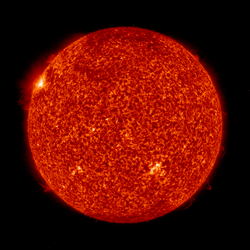 When the autumnal equinox occurs at 1330 UTC on Tuesday, September 22, we should see a seasonal improvement in HF propagation around that date. This is because the northern and southern hemispheres are bathed in roughly equal solar radiation, enhancing north-south propagation.
When the autumnal equinox occurs at 1330 UTC on Tuesday, September 22, we should see a seasonal improvement in HF propagation around that date. This is because the northern and southern hemispheres are bathed in roughly equal solar radiation, enhancing north-south propagation.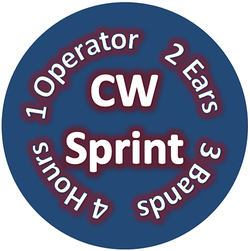 Sprint is the "QSY rule," which rewards operating agility as much as signal strength. Larger stations can't sit on a single frequency racking up contacts, and more modest stations can make that work in their favor. "Participation in the year's CW contests has been on the upswing, as people are staying home due to the pandemic," Silver added, noting that the September contest offers some solid practice ahead of the various fall contests, especially
Sprint is the "QSY rule," which rewards operating agility as much as signal strength. Larger stations can't sit on a single frequency racking up contacts, and more modest stations can make that work in their favor. "Participation in the year's CW contests has been on the upswing, as people are staying home due to the pandemic," Silver added, noting that the September contest offers some solid practice ahead of the various fall contests, especially 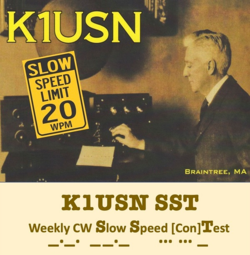 The 800 who responded indicated an overwhelming need for some sort of slow-speed activity as a follow-up to CW Academy, Pugh told ARRL. "It was a lot of work, but we hope this will prove to be a valuable tool within the CW community," Pugh said.
The 800 who responded indicated an overwhelming need for some sort of slow-speed activity as a follow-up to CW Academy, Pugh told ARRL. "It was a lot of work, but we hope this will prove to be a valuable tool within the CW community," Pugh said..jpg) The WA2NYC 9/11 special event commemorates the World Trade Center attack 19 years ago, when more than 2,900 lost their lives. WA2NYC will be on the air from September 10 until September 14. Operation will center on or near 28.450, 21.350, 14.300, and 7.238. QSL cards are available with an SASE to the club address. Contacts will be uploaded to Logbook of The World (LoTW).
The WA2NYC 9/11 special event commemorates the World Trade Center attack 19 years ago, when more than 2,900 lost their lives. WA2NYC will be on the air from September 10 until September 14. Operation will center on or near 28.450, 21.350, 14.300, and 7.238. QSL cards are available with an SASE to the club address. Contacts will be uploaded to Logbook of The World (LoTW).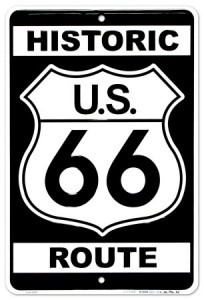 The
The 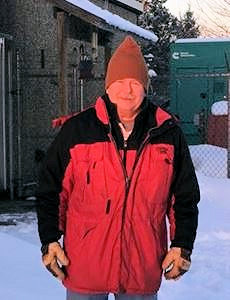 According to news accounts, Larner was disassembling an antenna on a tower located on Olson Farm Lane. The Knox County Sheriff's Office and Union Fire and Rescue responded, and the rescue squad pronounced Larner dead at the scene. The deceased was equipped with a harness and carabiner, a close friend on the scene told authorities.
According to news accounts, Larner was disassembling an antenna on a tower located on Olson Farm Lane. The Knox County Sheriff's Office and Union Fire and Rescue responded, and the rescue squad pronounced Larner dead at the scene. The deceased was equipped with a harness and carabiner, a close friend on the scene told authorities.







